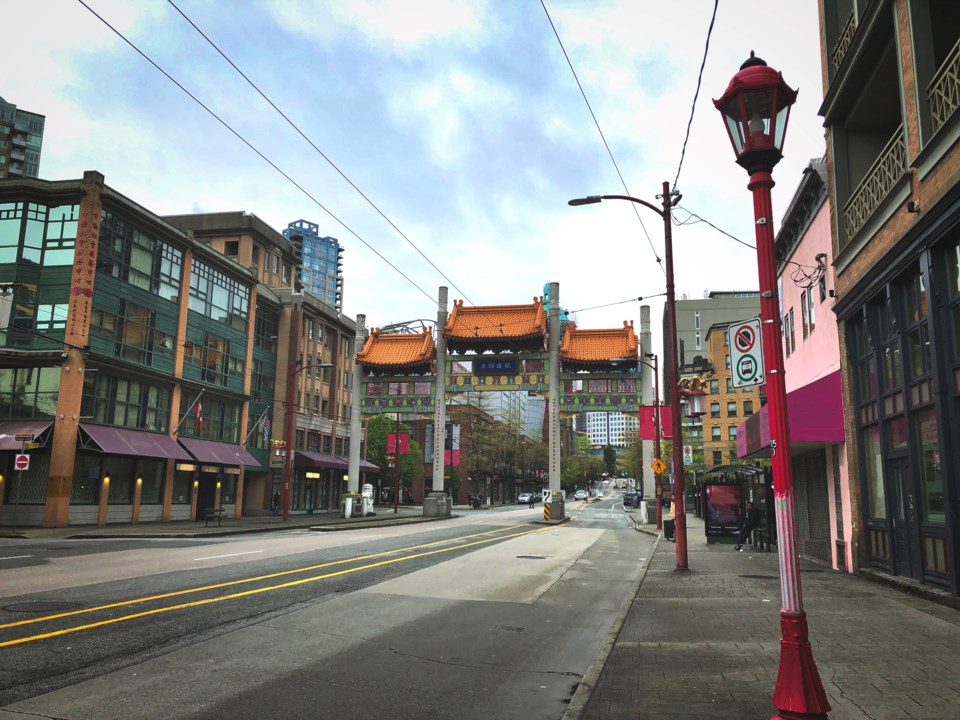For over a century there have been rumours of underground tunnels in Vancouver's Chinatown.
There are basements and areaways underground that may be narrow like tunnels but there is no actual network or warren secretly linking buildings. Further, given that Chinatown is on the edge of False Creek, any attempt at a tunnel, especially a clandestine one, would likely flood.
So, how is it that no matter how unlikely or impractical they might be, the legend of Vancouver's Chinatown tunnels just won't die?
"It goes all the way back to Charles Dickens," says Vancouver historian John Atkin. "It's his fault."
The venerable British writer's final work, The Mystery of Edwin Drood, left unfinished when he died in 1870, contained passages about Chinese people disappearing from the basements of buildings without detection.
The writing was discussed in British Parliament and fed into a stereotype of Chinese people as secretive and surreptitiously hiding things from the (white) public.
Atkin says that the racism directed at Chinese people sought to cast aspersions and when there wasn't any evidence that they were doing anything wrong, people decided that they must be doing something hidden.
As more people immigrated to North America, racism came with them and accounts of underground networks in Chinatowns popped up in New York, Portland, Vancouver, and Victoria all of which, Atkins says, are false.
Newspaper accounts suggest tunnels in early 1900s
One of the most famous accounts of a Chinatown tunnel in B.C. was in 1911 when a reporter from Chamber Magazine published an eyewitness account of a man disappearing through a secret door in the basement of a building in Victoria's Chinatown during a police raid. However, Atkins says there is no record of a Chamber reporter ever entering Victoria and claims that the writer made the whole thing up.
In Vancouver, there weren't Chinatown tunnel myths until concern over gambling was on the rise. Vancouver Daily World reports from the early 1900s suggest that the cops would raid gambling dens and come up empty so theories of secret passages and tunnels arose. But Atkins says that nothing ever came of those reports and no follow-ups were ever published. He also adds that the groups were usually just four or five men playing cards but were characterized as "dens" in the media.
The rumours of Vancouver's Chinatown tunnels have been greatly exaggerated on a global scale.
Atkins says that during the 2010 Olympics visiting media would ask him to give them tours of Chinatown and its rumoured tunnels. Several publications including Lonely Planet have written about the Sam Kee Building (also known as the world's most narrow commercial building), claiming that it has a tunnel that led to Shanghai Alley. They claim that members of the Chinese community used it to "escape police raids on their opium dens."
Rod Chow, president of Jack W. Chow Insurance LTD. confirms there is an areaway under the building at 1 East Pender St but says that it isn't connected to anything and doesn't extend as far as the alleyway.
He's not ruling out the possibility that there was something there in the past though.
"We don't feel any impact of [the myths] because these are just stories of the past," he tells V.I.A over the phone. "I don’t see anything negative about it because it's all about past history. There are lots of stories of the past that may or may not be true I suppose, this is just another one of them."
Chow says it all comes down to what people what to believe and points out that even the historian wasn’t there at the time.




